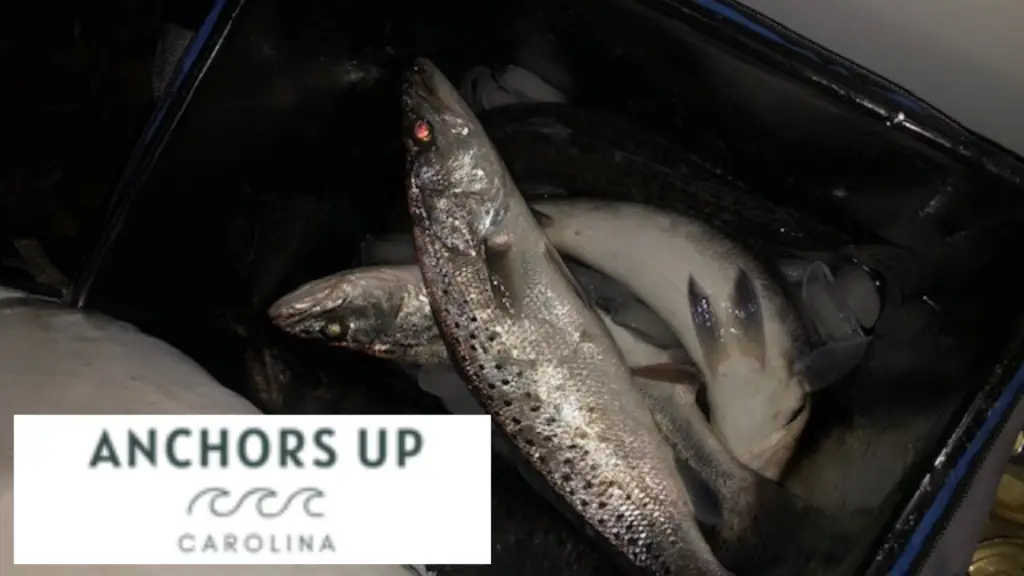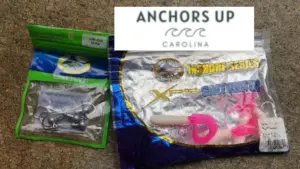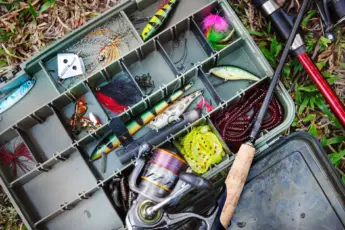One of my favorite lures for saltwater fishing is the Offshore Angler Swirl Tail Grub, in combination with a jig head. I have caught countless fish on the white and pink 4” swirl tail. Importantly, the lure has been tested in multiple bodies of water, including marinas, rivers, and saltwater lagoons. Without question, for a lure to be highly regarded, it must not only catch fish but remain durable. Here is what you need to know about the Offshore Angler Swirl Tail grub paddle tail lure.
How To Rig An Offshore Angler Swirl Tail Grub
Without a doubt, presentation is critical when rigging an artificial grub. Improper hook placement causes the paddle tail to swim awkwardly, thus limiting the number of strikes.
The hook’s point always begins by entering the top of the grub. Gently and slowly, run the grub over the hook without piercing the grub’s body. Continue until the top of the grub has reached the jig head. At this point, pierce the hook through the grub while ensuring it is aligned and not twisted.
Importantly, make a practice cast and ensure that the jig and grub are swimmingly correctly. If not, readjust or remove the grub and add a new swirl tail.
Where Can You Buy Offshore Angler 4” Swirl Tail Grubs
Conveniently, the 4-inch swirl tail grubs in the pink and white combination are located at Bass Pro Shop and online.
I have fished with a single pack of grubs over the last two years and still have four swirl tails to spare. With that being said, the Offshore Anglers grubs are durable. However, from time to time, they get chewed up by teeth.
Each pack contains 11 swirl tail grubs priced at 5 dollars per pack. The price is fair, considering the number of grubs included per package.
Best Jig Head To Use With Offshore Angler 4” Swirl Tail Grubs
Trust me, you don’t have to go fancy when it comes to selecting the correct jig head for a swirl tail grub.
I always use the same shaped and weighted jig head. However, depending on the depth and current, you may need to scale up or down with the weight.
The best jig head to pare with a 4-inch Offshore Angler Swirl Tail Grub is the Offshore Angler ⅛ ounce round-headed option. Importantly, the bag is sold in ten packs, so you will have plenty of spares for rigging new grubs.
Best Rod And Reel Combination To Fish Swirl Tail Jigs
It is important to select the correct rod and reel combination when fishing with swirl tail jigs. I prefer the 7 foot Penn rod with a Penn Battle 4000 reel.
The medium action rod is ideal for catching inshore saltwater fishing, including redfish, sea trout, flounder, black drum, and more.

Additionally, the rod and reel is capable of turning a fish when it is headed for pilings, marsh grass, or other obstruction.
Lastly, when the reel is spooled with 25-pound braid, it is sensitive. You’ll be unlikely to miss a bite, even from small fish.
Best Technique For Fishing Swirl Tail Jigs
I’ll admit, it took some practice to get down the proper technique for fishing a swirl tail jig. However, variations in retrieval techniques are necessary at times, depending on the situation.
Most often, I prefer to cast, allowing the jig to sink for five seconds before reeling at a slow speed. Remember, the tail requires little movement to make it spin. This approach is best suited for redfish and sea trout.
One variation is targeting flounder on the bottom. Importantly, flounder shelter on the seafloor before ambushing bait. For this reason, allow the jighead and swirl tail to either drag along the bottom or just above the bottom. Allow the jighead to sink and strike the bottom before reeling slowly.
With either approach, you’ll know when the fish strikes. Rather than making a solid hookset, I suggest reeling any slack before pulling back on the rod and reel. Keep pressure on the fish until it is landed.
Why I recommend The Offshore Angler Swirl Tail Grub
I was lucky enough to have a fellow angler tip me off to the 4-inch Offshore Angler Swirl Tail Grub. I’ll pass the information along to you because not only do fish like them, but they are durable. Remember to rig up the swirl tails properly to avoid them from being twisted or bunched up. An irregular swimming pattern will reduce the number of strikes.







